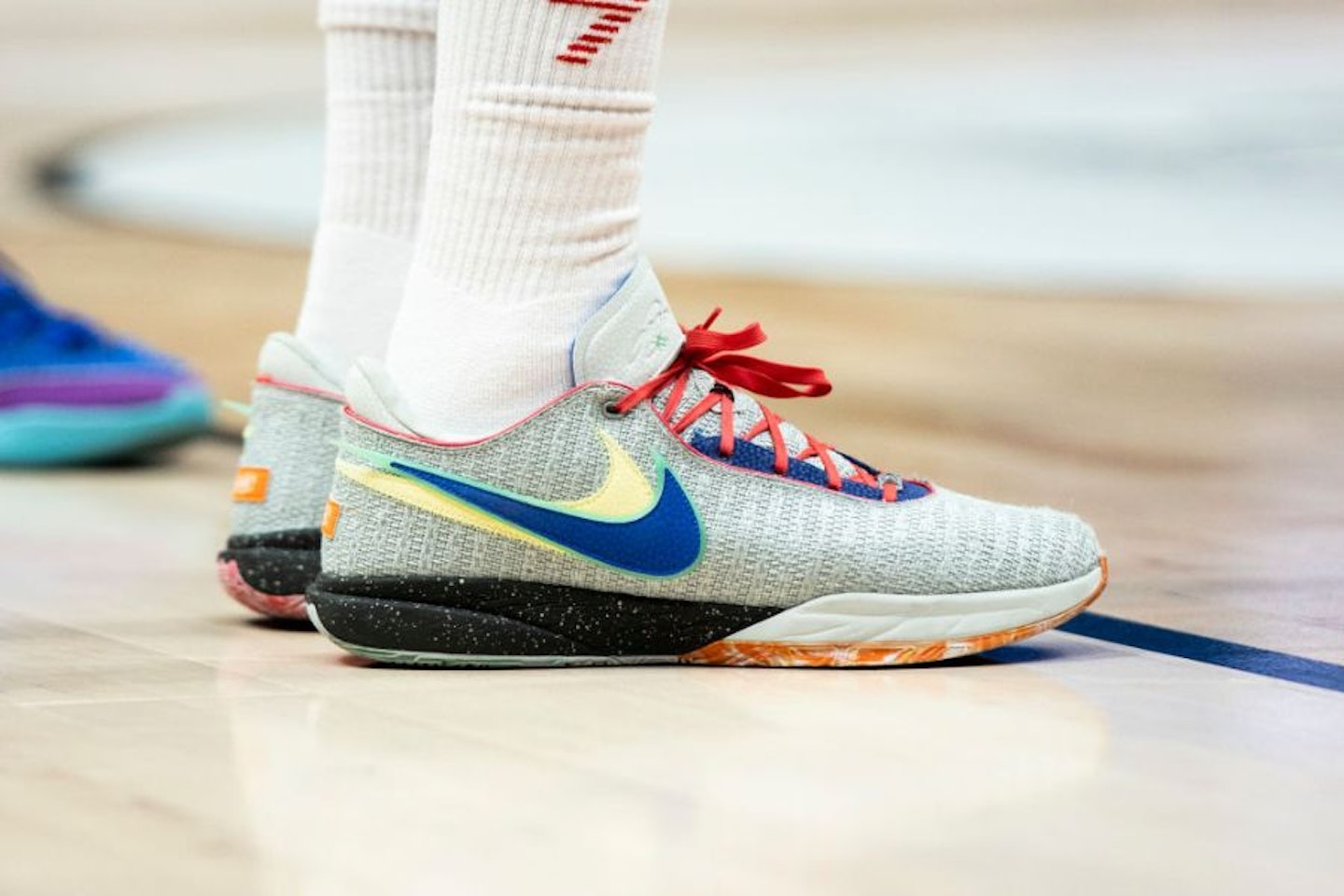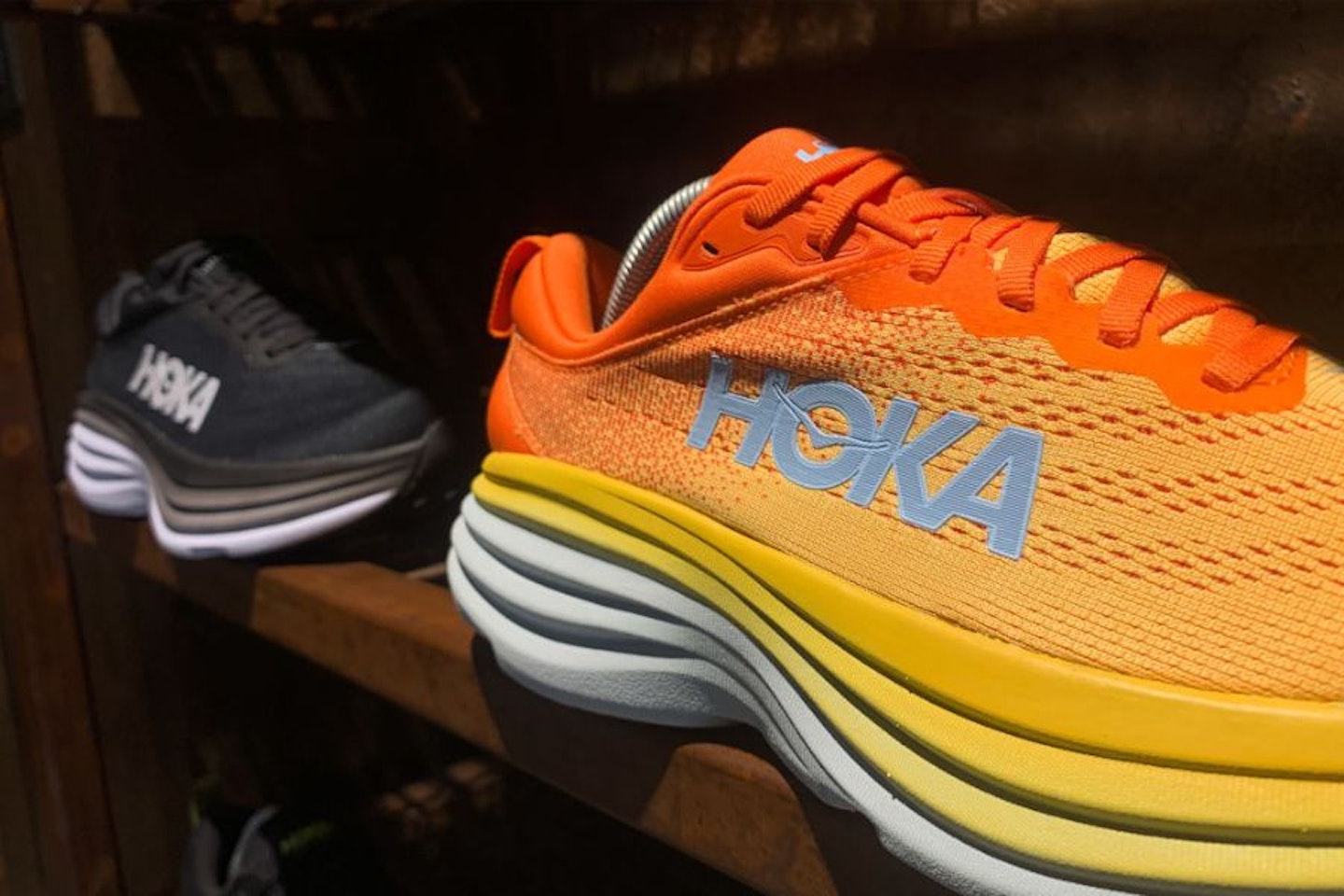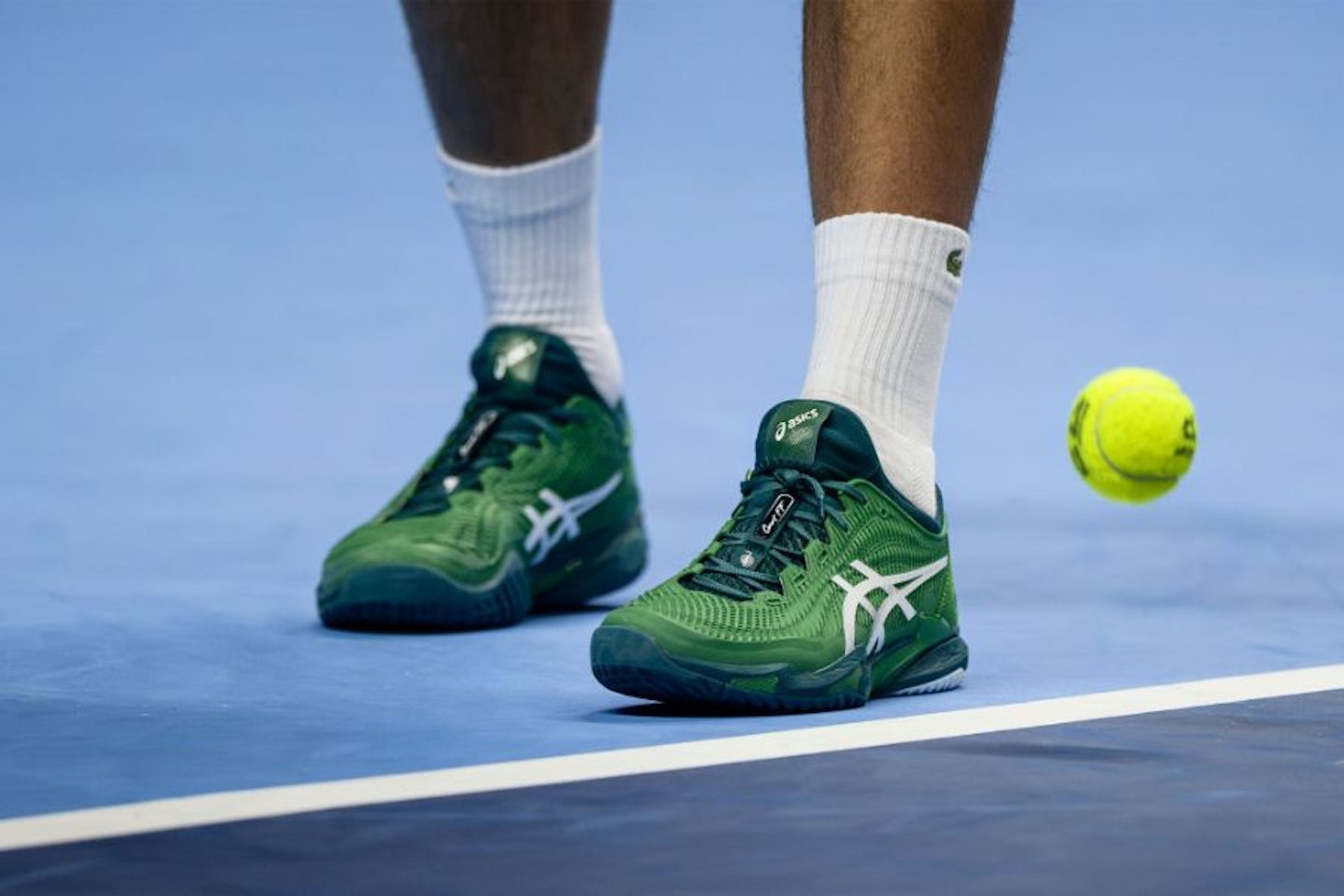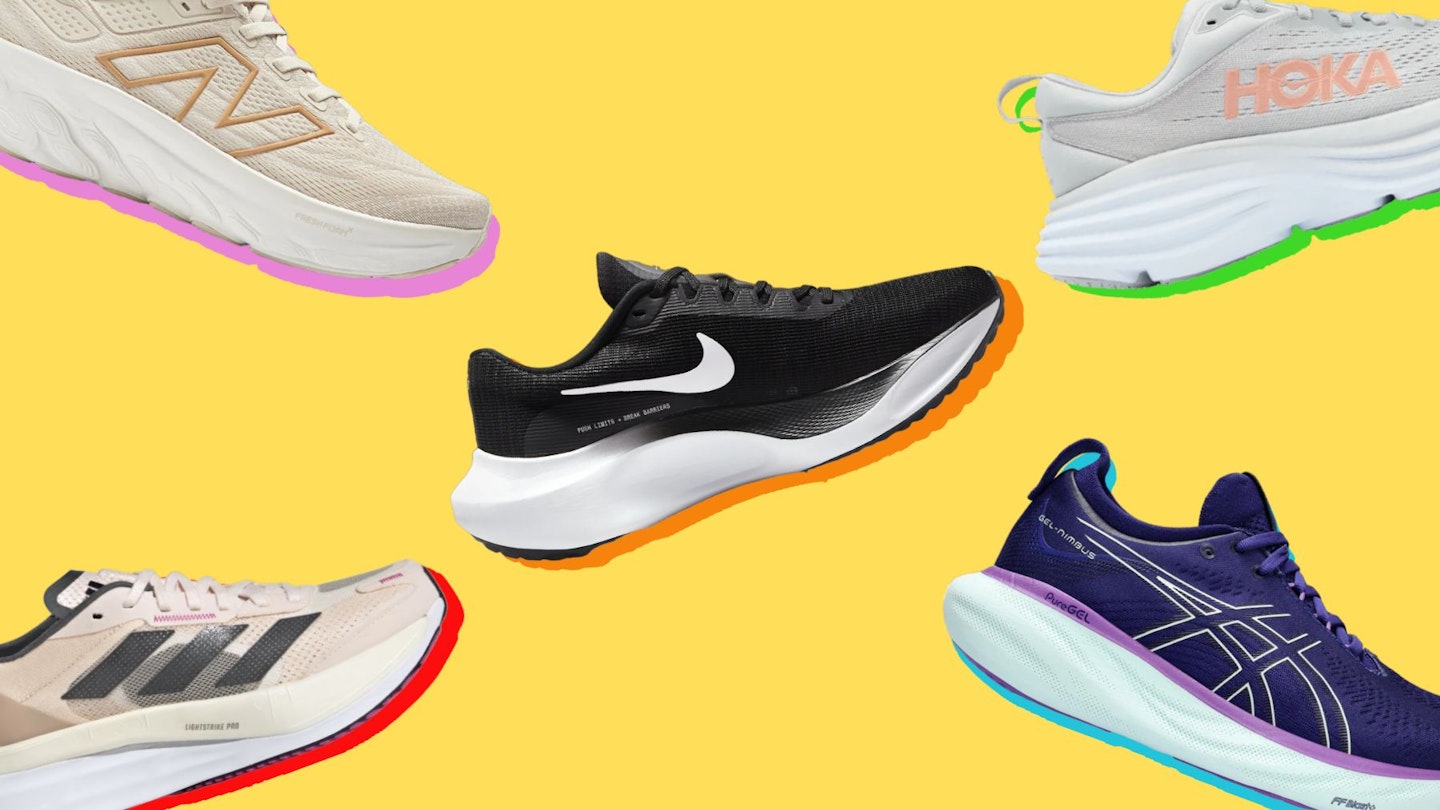If you thought searching for the best running shoe brands was as simple as finding a pair of trainers that matches your socks, think again. With each running shoe brand bringing something new to the market, along with their own jargon; 4D midsole, Zoom technology and FlyKnit , it can be tricky to decipher what you should really be looking for in a running shoe.
As we sprint into new possibilities for the humble running shoe, the industry has reached new heights of innovation. From sustainable materials, to cutting-edge technologies, it's time to dive into the top running shoe brands that are set to revolutionise the way we hit the pavement.
Nike: A Swoosh of innovation

To say that Nike is just a well-known brand is definitely an understatement. Born out of the partnership between Phil Knight and Bill Bowerman in the 1960's, Nike has become the global icon of sportswear.
Known for it's commitment to innovation and ubiquitous symbol - the Swoosh, Nike has time after time proven that their ground breaking technologies can change running performance. An important one for runners is the Zoom Air unit - a lightweight cushioning system that brings the foot closer to the ground. Although the Zoom Air collection of trainers originally took off in basketball, they're still a great choice for runners alike. Another marvel found in Nike running shoes is the FlyKnit technology. This has changed the overall construction of sports trainers. This type of upper construction was created to provide a lightweight, form-fitting and seamless fit.
Beyond the valiant success of Nike products, comes the legacy they leave. Nike's iconic 'Just Do It' slogan is more than just a tagline. It's a mantra for empowerment, and inspires athletes of all levels to excel in workouts and understand their potential. Many brands could learn a thing or two from Nike, by emulating their commitment to aligning themselves with cultural changes and new trends.
Adidas: Sustainable stripes

Another global giant in the running shoe industry is Adidas. Founded in 1949 by Adolf Dassler, the brand has grown from its beginnings in a small German town, to becoming a symbol of athletic power worldwide.
At the heart of Adidas lies its sustainability initiatives. The brand has taken significant strides in incorporating recycled materials into its products. For example, when we review Adidas footwear, a massive pro of most of their shoes is that they're usually made with a minimum of 50% recycled content. They also have schemes, like PrimeBlue (recycled material made with Parley Ocean Plastic) and PrimeGreen (a series of high-performance recycled materials) that are clearly marked on their products so buyer's know that what they're investing in environmentally-conscious. We think this is really important as it leaves a positive imprint on both you, as a runner, and the planet too.
HOKA: A modern miracle

Compared to the other brands on our list, HOKA is a relatively new brand in the running shoe game. Established in 2009 by two French trail-running enthusiasts, HOKA has become quite the name. The word HOKA is derived from the Maori language, and translates to 'fly over the earth.' And what a better summary for the brand. Built to make individuals feel as though they're taking their running experience to new heights.
The original HOKA ONE ONE introduced a whole host of ergonomic technologies. To mention just one, the introduction of the J-Frame technology has helped with adding stability to running shoes, to prevent overpronation. The most important part? The technology didn't affect the all-important weight of the trainer. This technology caters to runners of all levels and all foot types; overpronated, flat or supinated, providing a stable platform for a wide range of foot strikes. However, HOKA's inclusivity goes beyond their J-Frame technology. The brand believes that every runner deserves to experience the joy of running, without compromising on comfort.
New Balance: Fresh Foam fuel

New Balance is yet another brand who has etched its name into the big names of athletic footwear. Founded in 1906, originally as the New Balance Arch Support Company, the brand has only gained more and more traction as their shoes transcend trends.
In 2014 New Balance debuted their Foam Foam technology to the world. The first of its kind. A midsole compound made to deliver a blend of comfort, responsiveness and support. The difference with this foam is its ability to cleverly adapt to the individual biomechanics of a runner's foot. And although lots of running shoe brands say their shoes can do this, none do it quite like New Balance. That's because their Fresh Foam technology has been informed by the pressure mapping and force application data that was collected from real athletes.
ASICS: The greatness of GEL

The acronym ASICS itself reflects what the brand stands for - 'Anima Sana In Corpore Sano', aka 'Sound Mind in a Sound Body.' And the philosophical foundation underscores ASICS' commitment to promoting the holistic wellbeing of the athlete wearing the trainers.
Arguable the most iconic trainer technology ASICS has brought to the table is its GEL cushioning system. Introduced in the 1980's, the GEL goodness absorbs and dissipates shock during impact. And, provides protection for runner's, who at the time, struggled to get this anywhere else. Now, the GEL technology can be found in the rearfoot and forefoot to assist with two different things. The first being to reduce the impact during heel strike and allows for a smooth transition. The second being to minimise shock during any forward strides. Plus, if you're wondering what on earth the actual GEL is made from, it's silicone that's been enhanced in labs to create a unique substance that ASICS are still using to this day.
A guide to choosing the best running shoes
So you know the brands, you know their technologies, but do you actually know how to choose the best running shoes?
With so many brands competing for your attention, and all offering different benefits, it's key to make sure that your footwear fits with your individual requirements.
Foot type
Not all feet are the same. Different foot types will all require differing levels of support. Determine your arch type (if you don't know how, practising podiatrist Trevor Prior will tell you), and whether you have flat feet, neutral arches or high arches. Knowing this information will help you in deciding whether you need to go for a specialist trainer or not.
Running terrain
Think about where you normally run. Is it the pavement, a treadmill, or both? Trail running shoes are primarily designed for off-road terrains, meanwhile road running shoes work better for smoother surfaces. If you want one pair of trainers for all terrains, it's best to opt for a good gym trainer, with some sort of grip too.
Cushioning
Although cushioning is key for shock absorption, different brands offer different levels of it. Like we were talking about earlier, New Balance shoes really focus on cushioning, so their shoes often have a higher level of it. Other brands, like VIVOBAREFOOT, prefer no cushioning at all with their zero-drop sole design.
Pronation
Your pronation refers to how your foot rolls inward during each stride. There's three different types of pronation; neutral, overpronation and supination, and you might not know it, but you'll have one of these. Finding out about your gait will help you to choose the best trainer for your feet.
Running goals
Different shoes, and different brands, might cater for various types of activities. For example, not all trainers are made for intense activities like CrossFit or HYROX. As a general idea, for long-distance running and marathon training, prioritise cushioning and ankle support. For shorter distances, lightweight shoes might be your best friend.
Gemma Lavers is a Health & Fitness Writer for What's The Best. From understanding nutrition to practising yoga and Pilates to delving into the psychology of motivation. She enjoys demystifying the latest fitness trends and staying on top of the dynamic health landscape, whether that's the best gym leggings, fitness trackers or the benefits of yoga.
When Gemma’s not writing, she can be found attending Pilates, yoga and Zumba classes. She’s also a bit of a home workout aficionado, constantly trying out new ways to keep her moving at home. Between writing, exercising and shopping, there’s nothing she loves more than hopping on a plane and exploring new cultures.
Subscribe to the What’s The Best Newsletter to keep up to date with more of the latest reviews and recommendations from the rest of the What’s The Best team.
